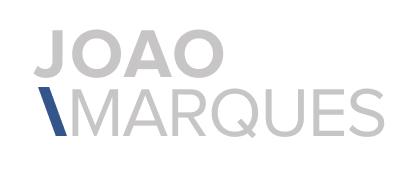e-Portugal
The new Portal simplifies the experience of using Public Administration electronic services, consolidated in a single point of contact
Role:
UX Designer
Client:
AMA - Administrative Modernization Agency
Team:
Cross-functional team of 13: 1 PM, 3 designers, 2 front-end dev, 7 back-end dev
Year:
2018
the challenge
Following the Strategy for Digital Transformation in Public Administration, the main challenge was to fuse 2 Portals (citizen portal and entrepreneur portal) into one.
The main challenge was to consolidate into a single point of contact a platform that could provide information to citizens (depending on their location and context) and to facilitate interactions between citizens, companies and the State, making them clearer and simpler.
The goals
AMA’s main objective was the improve areas of administrative modernization and simplification and electronic administration, namely, the Citizen Portal in order to organize the electronic information and services of the entire Public Administration, with a high concern in terms of usability, personalization and customization of each citizen.
The goal was also to improve the digital experience and accessibility, allowing the users to easily find the information they are looking for providing direct access to online services, with useful and structured step-by-step information.
Process
My Role
When I joined the ePortugal project team, the design and comprehension phases had already taken place.
Given my business and design background, my role in this project extended to three different areas throughout the project roadmap.
The areas where I had the opportunity to work were:
Requirement analysis in areas such as Online Certificates;
UX Chatbot Journey Mapping (defining the necessary utterances and flow conversations of 3 key services);
Usability and Quality Assurance tests according to the already conceived user stories.
Therefore, the description of the processes for each of my interventions is as follows.
Online Certificates
The online certification field is extremely important for users as it often plays a crucial role during significant moments in their lives. Our goal was to focus on these key life events requiring certification and ensure a prompt and efficient process.
To achieve this, we prioritized the development and implementation of certificates for major life events such as:
the birth of a child;
the loss of a loved one;
the registration of a marriage.
Our approach involved creating a unified master template by identifying and incorporating common elements across these certificates. This process began with the production and testing of wireframes, which evolved into both low-fidelity and high-fidelity prototypes.
The system was designed to dynamically adapt based on the type of certificate required (e.g., birth, death, marriage) by modifying the master template to add or remove fields as needed to suit the specific requirements of each certificate.
UX Chatbot Journey Mapping
In today’s digital landscape, chatbots are increasingly popular due to their potential to reduce customer service costs and enhance user interaction with businesses. Recognizing this, our client sought to implement a virtual assistant to help users navigate their portal.
Challenge
The project faced a significant challenge: catering to a diverse user base with varying educational backgrounds and levels of speech literacy.
We needed to develop a simple yet effective communication method that maintained speech coherence.
Solution:
1. Identify Frequently Requested Services: We began by pinpointing the most requested services by users.
2. Incorporate Portuguese Grammar: We integrated this data with the complexities of Portuguese grammar.
3. Train the Algorithm: By training the algorithm to recognize user intentions and correlate adverbs (like “where”, “when”, “how”) with specific indexing terms (such as “citizen card”, “driving license”, “renewal of the citizen card”), we optimized the chatbot’s decision tree and speech recognition workflow.
This approach enabled us to create a virtual assistant that effectively supported a wide range of users, ensuring clear and coherent communication.
QA and Usability Testing
To address these potential issues, the team conducted QA tests in a pre-production environment across every browser (Chrome, Safari, Firefox, IE, and Opera) on every platform (desktop, tablet, and mobile) in both iOS and Windows.
These tasks allowed us to prevent a great number of bugs and errors that would undermine the system’s overall user experience. Bugs were reported and addressed using an agile project management system.
To conduct Usability Tests, we selected users who matched the seven persona profiles created in the design thinking phase.
1. Scenario Development: We developed three scenarios, each with three underlying tasks.
2. User Testing: During each test, users were presented with a scenario and related tasks, and were asked to verbalize their thought process while executing the tasks.
3. Observation: An important aspect was observing users’ reactions while interacting with the portal, allowing the team to remotely (via video conference) assess whether users were having a positive browsing experience.
This thorough approach ensured a seamless and satisfactory user experience by identifying and resolving issues before launch.
Overview
While the project achieved significant milestones, there are several areas where further improvements could be made:
1. Enhanced Inter-Departmental Communication:
• Streamlining communication protocols between various state entities could expedite decision-making processes and reduce bureaucratic delays.
2. User Education and Support:
• Despite the effectiveness of the virtual assistant, user education remains crucial. Providing comprehensive guides, tutorials, and support resources can help users better understand how to navigate the portal and utilize its features.
Additionally, offering multilingual support could cater to a broader audience, ensuring inclusivity and accessibility for all users, regardless of their language proficiency.
By addressing these areas, the overall efficiency and user experience of the portal could be further enhanced, making it a more powerful tool for both the public and the government.
Continuous feedback loops and iterative improvements based on user input will also play a critical role in maintaining and enhancing the system’s effectiveness over time.
Disclaimer:
From September 2024, www.eportugal.gov.pt changed his identity to www.gov.pt







